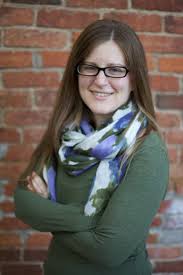This post was originally shared on Femmonite, April 8, 2013.
By Meghan Florian

Meghan Florian, MTS, is a freelance writer and editor, and serves as Communications Coordinator for the Resource Center for Women and Ministry in the South. A graduate of Hope College and Duke Divinity School, she is currently pursuing an MFA in creative writing from Queens University of Charlotte.
You can’t be what you can’t see.
I forget where I first heard this statement, but I remember the context. It was a reference to women’s ministry. The point was that children, in many denominations, grow up with male spiritual leaders and pastors, and that this makes girls less likely to imagine “Pastor!” as an enthusiastic answer to the question, “What do you want to be when you grow up?”
I don’t believe it’s true that you can’t be what you can’t see, but I do believe it’s a heck of a lot harder. Growing up in a church tradition that did not ordain women (though that denomination has since changed, thanks be to God), I was blessed to have church leaders and others — my pastor, seminary interns, my family — encourage my penchant for theological questions, and the ideas I tossed around about “going into ministry.” Given our denomination’s stance, it feels odd that I was so encouraged by my pastor and the seminarians. Perhaps they were supportive of women’s ordination, but did not want to get into a discussion about it with a 17-year-old. Perhaps they were not supportive, but saw that I had gifts they believed could be used in the church in other ways. I may never know, but I do know one thing — nobody ever asked me to help lead a worship service.
Is it any wonder that I entered seminary so “sure” that I was not going to be a pastor? My senior year of college, before I moved to Durham to attend Duke, was the first time in my life I had a woman pastor myself. At the age of 23, I was finally hearing the gospel proclaimed by a woman’s lips on a regular basis. Thinking of this now, it ought to be the most natural thing in the world. In this Easter season we revisit stories of Jesus’ resurrection, of his appearance to women, and we listen as those women share the good news — whether they are believed or not. At the time it felt revolutionary, every Sunday. My world broke open. I began to ask new questions about my own vocation, which was as unsettling as it was freeing.
These days there are a lot of children running around my church. Now that a few of them are old enough to know how to read, we include them on the long list of scripture readers for Sunday services. Given the breadth of this list to begin with, it’s no surprise we want to include the children, to begin teaching them that church is something we participate in together, that we each have gifts to bring to the worship service. No one asked me to do anything like that until I was in seminary. I am grateful that each and every one of our children can grow up understanding that their voices are called to proclaim the good news.
This past Sunday, Clara, who is seven, stood at the pulpit on a black plastic milk crate in her Sunday best, as she slowly and carefully read the gospel passage. It was a long one, the story in John 20 of Jesus appearing to the disciples who are gathered in a back room, and then to Thomas, the doubtful one. She had clearly practiced, and she enunciated each verse beautifully. I was moved by the gospel, this passage being one I have always resonated with, but on this occasion it was more than that.
I am always encouraged when the children read scripture in church, but this day it brought me joy to see how a little girl is part of a community where not only does she see women leading worship, praying, and preaching — but she gets asked to help. What she sees she can also do.
I don’t know what any of the children in our church will want to “be” when they grow up, when it comes to choosing a job or a vocation. But it moves me in ways I simply cannot find words for that I can be part of shaping a community where each one knows they are called to share the good news of the gospel, just as they are.

